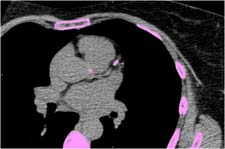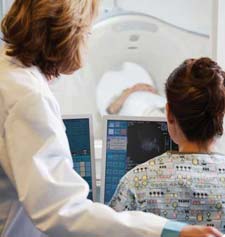Patient Safety:
Are screening exams worthwhile?
Screening examinations are tests that are performed on a large group of symptom-free people who may have an undetected disease. The goal of screening exams is to discover a disease at an early stage so that it can be successfully treated.
Screening a symptom-free population
- Disease discovery only occurs in a small number of people.
- The benefits of early discovery must outweigh the potential health consequences of radiation exposure to the large number of people who do not have the disease.
A screening program must identify the population at risk for the undetected disease.
Characteristics of the population must be defined:
- By age
- By gender
- By other factors, like ethnicity or family history of the disease
Mammography is an example of a successful screening program for women over the age of 40. This program, in place for about 35 years, has resulted in reduced death rates from breast cancer in women. There has been no evidence of any increase in the breast cancer rate due to the low-level exposure to radiation.
Mammography screening works. Could other screening tests work as well? Consider screening examinations for:
- Colon cancer
- Lung cancer
- Calcium-scoring examinations for early detection of heart disease
Computed tomography (CT) screening for colon cancer, called CT colonography (CTC), or virtual colonoscopy, has been gaining attention due to its ability to find early colon cancers. Today's evidence suggests that undetected colon cancer is sufficiently prevalent in the general population to justify a screening examination once every five years.
The goal is to discover colon cancer early, when it can be eliminated before it spreads. In 2010, the American Cancer Society recommended that anyone over the age of 50 have:
- Flexible sigmoidoscopy every 5 years, or
- Colonoscopy every 10 years, or
- Double-contrast barium enema every 5 years, or
- CT colonography (virtual colonoscopy) every 5 years
The National Lung Screening Trial found that screening with CT could be beneficial for current and former heavy smokers at high risk for lung cancer. This decade-long clinical trial established low-dose helical CT as the first validated screening test with the potential to reduce mortality due to lung cancer. for more information visit our Chest CT page.

CT-calcium scoring
In certain scientific studies looking at calcium scoring in the heart, high calcium scores, determined by CT imaging, correlated with heart disease in people without symptoms. The radiation exposure necessary to perform these exams has gone down markedly with newer CT technologies. Thus, many believe that this examination may benefit people who have early stages of heart disease but no symptoms.
What about whole-body CT screening of the general public? The benefits do not appear to justify the radiation exposure at this time.
A large number of clinical studies are needed to determine if these or other types of CT screening exams are effective at improving health. These clinical studies are currently being conducted. For more information visit our Clinical Trials page.

This page was reviewed on August 19, 2011


